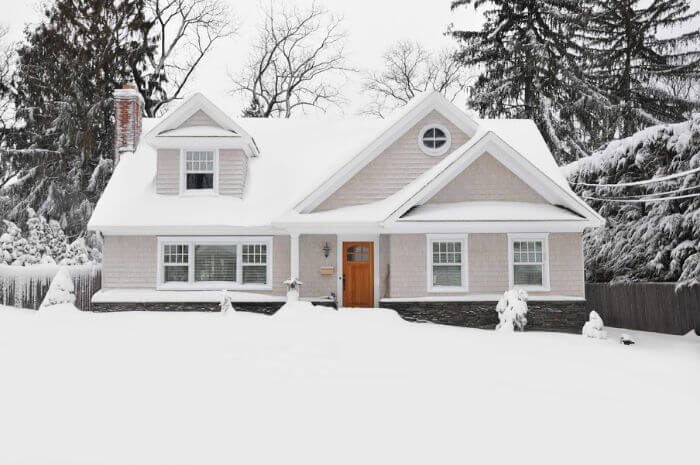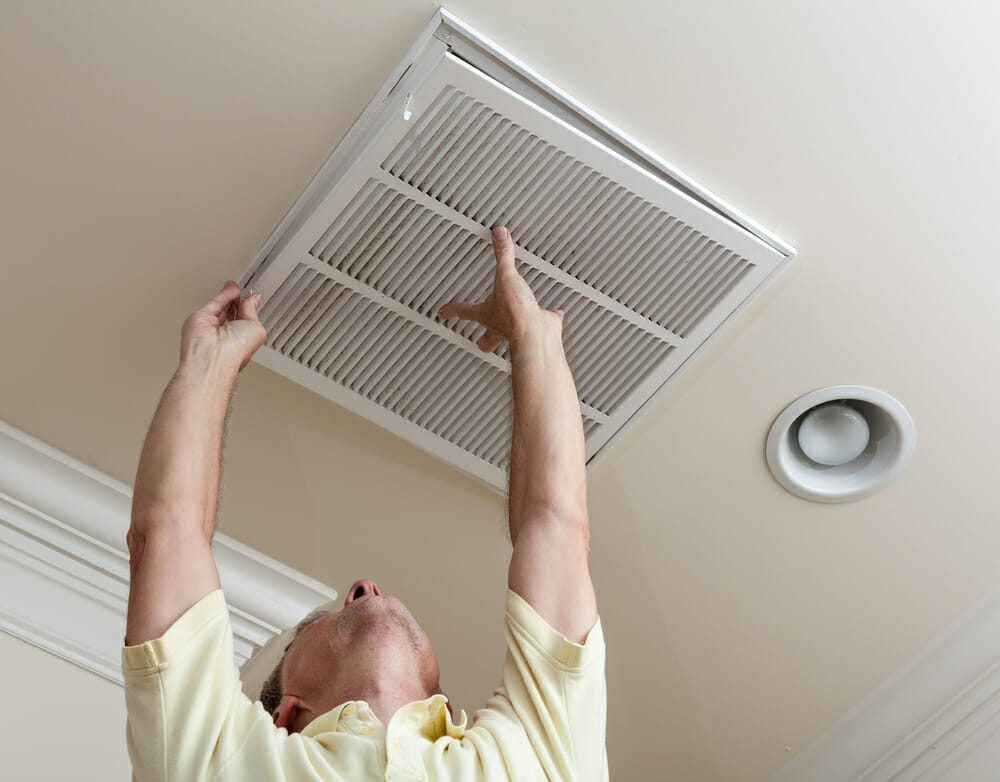Homeowner Maintenance 101: A Complete Guide
Staying ahead of home maintenance can prevent costly surprises and extend the life of your systems and surfaces. This guide includes seasonal checklists, preventative care strategies, budgeting insights, and DIY tips to help you stay on top of it all. Whether you’re a seasoned homeowner or just getting started, these proactive habits will help you protect your investment and maintain your home’s value.
Seasonal Home Maintenance Checklists
Each season brings new tasks and challenges. Use these quick seasonal guides to stay ahead of wear and tear. For more detailed checklists, check out our seasonal home maintenance guides.
Spring
Spring is the time to recover from winter and prepare your home for warmer months ahead. Moisture, freezing temperatures, and debris can leave behind small issues that are easy to miss but expensive to fix later.

- Inspect your roof and gutters for winter damage and clear out debris
- Schedule an HVAC tune-up before the summer heat arrives
- Power wash siding, walkways, and driveways to remove grime and mildew
- Test irrigation systems and exterior faucets for leaks or damage
Explore the full Spring Maintenance Checklist
Summer
Focus on outdoor upkeep and ensuring your cooling systems are functioning efficiently. Summer is also a great time to tackle exterior painting or repair work.

- Clean and inspect ceiling fans, window screens, and exterior lighting
- Check for pest activity in attics, basements, and crawlspaces
- Service or replace AC filters and inspect vents
- Touch up exterior paint or reseal decks and fences
Explore the full Summer Maintenance Checklist
Fall
Fall is all about preparing your home for colder weather and preventing drafts and freeze damage.

- Clean gutters and downspouts to prevent ice buildup and water damage
- Inspect windows and doors for drafts and replace weatherstripping
- Schedule a furnace inspection and replace air filters
- Drain and winterize outdoor faucets and sprinkler systems
Explore the full Fall Maintenance Checklist
Winter
Focus on indoor systems, safety checks, and monitoring areas prone to cold-weather wear.

- Inspect attic insulation and ensure ventilation is clear
- Test smoke and carbon monoxide detectors and replace batteries
- Watch for ice dams and roof leaks after snowstorms
- Maintain indoor humidity with a humidifier to prevent cracking and condensation
Explore the full Winter Maintenance Checklist
Preventative Home Maintenance Tips by System
Routine checks and upkeep can extend the life of your home’s critical systems. Here are expert tips to stay ahead of major repairs:
HVAC
- Change filters every 1 to 3 months to improve air quality and efficiency
- Hold the filter up to the light — if you can’t see through it, it’s time to replace it
- Schedule professional inspections and tune-ups in spring and fall
- Ask your technician to check refrigerant levels, blower motors, and thermostat settings
- Clear outdoor condenser units of leaves, dirt, and debris
- Visually inspect for blockages and trim vegetation at least 2 feet around the unit
- Seal and insulate ductwork to reduce heat loss and improve airflow
- Look for disconnected ducts or signs of air leaks (like dust or temperature swings) to improve air quality and efficiency
Leave it to the pros: Refrigerant leaks, electrical faults, or duct redesigns
Plumbing
- Check for under-sink leaks and corrosion around fittings
- Feel pipes for dampness, and look for mineral buildup or discoloration
- Insulate exposed pipes before winter to prevent freezing
- Focus on pipes in unheated areas like basements, attics, and garages
- Flush your water heater annually to clear sediment and extend its life
- Listen for popping noises — a sign of sediment buildup
- Know where your main water shut-off valve is in case of emergencies
- Test it periodically to ensure it turns easily and shuts off water completely and corrosion around fittings
Leave it to the pros: Water heater repairs, pipe replacement, or low water pressure diagnostics
Roofing
- Inspect shingles for damage or curling after storms
- Look for loose, missing, or curled shingles and granule buildup in gutters
- Check flashing, chimneys, and vent boots for cracks or gaps
- Use binoculars or a drone for a safe view from the ground
- Keep gutters clean to prevent roof and foundation issues
- Trim trees near the roof to reduce debris and avoid damage
Leave it to the pros: Any work that requires climbing onto the roof or replacing large sections of shingles
Windows & Doors
- Re-caulk gaps and install or replace weatherstripping
- Inspect corners and sills for cracking, peeling, or gaps in old caulk
- Test window locks and adjust tracks for smooth operation
- Try opening and closing windows — resistance could indicate buildup or misalignment
- Clean and lubricate hinges, locks, and sliding tracks
- Use a silicone-based lubricant for best results on moving parts
- Replace any cracked glass or broken seals to improve efficiency
- Look for condensation between double panes — a sign of seal failure and install or replace weatherstripping
Leave it to the pros: Broken glass replacement, sash repair, or major frame warping
Siding
- Inspect for mold, warping, holes, or animal damage
- Walk around your home and check for stains, bulges, or insect nests
- Gently power wash vinyl or fiber cement siding once a year
- Repaint or seal wood siding to prevent rot and weather damage
- Trim back landscaping that’s too close to the siding
Leave it to the pros: Replacing damaged panels, lead paint remediation, or high elevation work
Insulation
- Check attic insulation depth and moisture levels
- Look for uneven insulation, damp spots, or evidence of rodents
- Seal air leaks around vents, pipes, and light fixtures
- Use expanding foam or weatherproof sealant where needed
- Upgrade to higher R-value materials for better efficiency
Leave it to the pros: Installing blown-in insulation or addressing moldy/compromised insulation
Garage Doors
- Lubricate tracks, rollers, and hinges twice a year
- Use a silicone-based spray or garage door lubricant; avoid WD-40, which can attract dust
- Open and close the door while applying to ensure even distribution and spot any sticking points
- Test auto-reverse safety function
- Clean and inspect weatherstripping
Leave it to the pros: Spring replacement, track realignment, or opener motor issues
Decks and Fencing
- Check for loose boards, nails, and splintering
- Power wash and reseal wood surfaces every 1 to 2 years
- Tighten hardware and replace rusted fasteners
Leave it to the pros: Structural repairs, sanding large surfaces, or replacing rotted posts
Flooring
- Vacuum and mop regularly to prevent grit damage
- Refinish wood floors when they show signs of dullness or scratches
- Inspect tile grout and replace if cracking or missing
Leave it to the pros: Full floor replacement, sanding/refinishing, or subfloor repairs
Basements and Foundations
- Check for signs of water intrusion, musty smells, or cracks
- Look for water stains on walls or flooring, peeling paint, or efflorescence (white powdery residue)
- Musty odors often indicate hidden mold or persistent dampness
- Inspect concrete walls and floors for hairline cracks or widening gaps
- Use a dehumidifier to reduce moisture buildup
- Ensure downspouts direct water away from the foundation
Leave it to the pros: Structural cracks, drainage system installation, or sump pump issues
Stairlifts
- Keep tracks clear of debris and dust
- Check for unusual noises or resistance when operating
- Replace batteries on remote controls
Leave it to the pros: Motor issues, track alignment, or safety sensor malfunctions
Gutters
- Clean gutters twice a year or more if trees are nearby
- Look for shingle grit buildup or standing water after rainfall
- Check for leaks, sagging, and loose brackets
- Run water through the gutters to spot any leaks or misalignments
- Install guards to reduce future debris buildup
- Inspect guards regularly to ensure they’re not clogged or detached a year or more if trees are nearby
Leave it to the pros: Realigning gutters, installing complex guard systems, or replacing sections
Budgeting for Annual Repairs
Even well-maintained homes will need repairs or upgrades from time to time. Planning for those expenses helps avoid financial stress when unexpected issues arise.
- Set aside 1% to 3% of your home’s value annually for general upkeep and repairs
- Build a separate emergency fund for big-ticket items like HVAC units, water heaters, or roof replacements
- Stay organized with a maintenance calendar to track upcoming tasks and service dates
- Consider a home maintenance app or digital checklist to streamline your planning
DIY Home Maintenance Tips
You don’t need to be a contractor to handle everyday maintenance. These simple tasks can help keep your home safe, efficient, and looking great:
- Clean refrigerator coils and dryer vents to reduce fire risk and improve performance
- Use vinegar and baking soda to freshen drains and garbage disposals
- Patch minor drywall cracks or holes and apply touch-up paint
- Replace leaky faucet washers or upgrade to water-saving showerheads
Know your limits: Anything involving gas lines, electrical wiring, structural framing, or climbing on roofs should be handled by a licensed pro. DIY is rewarding, but safety comes first.
Keep Your Home in Shape Year-Round
Routine home maintenance doesn’t have to be overwhelming. A seasonal approach and a little know-how can keep your systems running smoothly and your home in great shape. Use this guide as your go-to resource and bookmark our checklists for deeper dives throughout the year.






